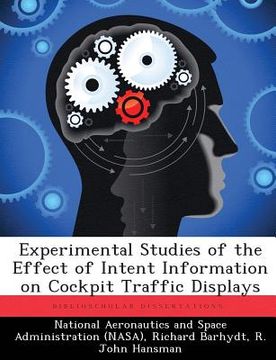Share
Experimental Studies of the Effect of Intent Information on Cockpit Traffic Displays (in English)
National Aeronautics and Space Administr
(Author)
·
Richard Barhydt
(Author)
·
R. John Hansman
(Author)
·
Biblioscholar
· Paperback
Experimental Studies of the Effect of Intent Information on Cockpit Traffic Displays (in English) - National Aeronautics and Space Administr ; Barhydt, Richard ; Hansman, R. John
$ 48.80
$ 57.95
You save: $ 9.15
Choose the list to add your product or create one New List
✓ Product added successfully to the Wishlist.
Go to My WishlistsIt will be shipped from our warehouse between
Monday, July 08 and
Tuesday, July 09.
You will receive it anywhere in United States between 1 and 3 business days after shipment.
Synopsis "Experimental Studies of the Effect of Intent Information on Cockpit Traffic Displays (in English)"
Intent information provides knowledge of another aircraft's current and future trajectory states. Prototype traffic displays were designed for four different levels of intent: Position, Rate, Commanded State, and FMS (Flight Management System)-Path. The current TCAS (traffic collision avoidance systems) Display, which shows altitude rate in addition to current position and altitude, was used as a baseline and represents the lowest level of intent. The Rate, Commanded State, and FMS-Path Displays show increasing levels of intent information using TCAS-like symbology in addition to incorporating a conflict probe and profile view display. An initial experiment was run on the MIT (Massachusetts Institute of Technology) Part Task Flight Simulator in which eight airline pilots flew five traffic scenarios with each of the four displays. Results show that pilots had fewer separation violations and maneuvered earlier with the three intent displays. Separation violations were reduced when pilots maneuvered earlier. A second experiment was run to compare performance between displaying intent information directly and incorporating it into a conflict probe. A different set of eight airline pilots flew four traffic scenarios with the TCAS and Commanded State Displays with and without the conflict probe. Conflict probes with two minute and long range look-ahead times were tested. Displaying conflict bands or showing intent information directly both led to fewer separation violations and earlier avoidance maneuvers than the base TCAS Display. Performance was similar between the two minute and long range look-ahead conflict probes. Pilots preferred all intent displays over the TCAS Display.
- 0% (0)
- 0% (0)
- 0% (0)
- 0% (0)
- 0% (0)
All books in our catalog are Original.
The book is written in English.
The binding of this edition is Paperback.
✓ Producto agregado correctamente al carro, Ir a Pagar.

